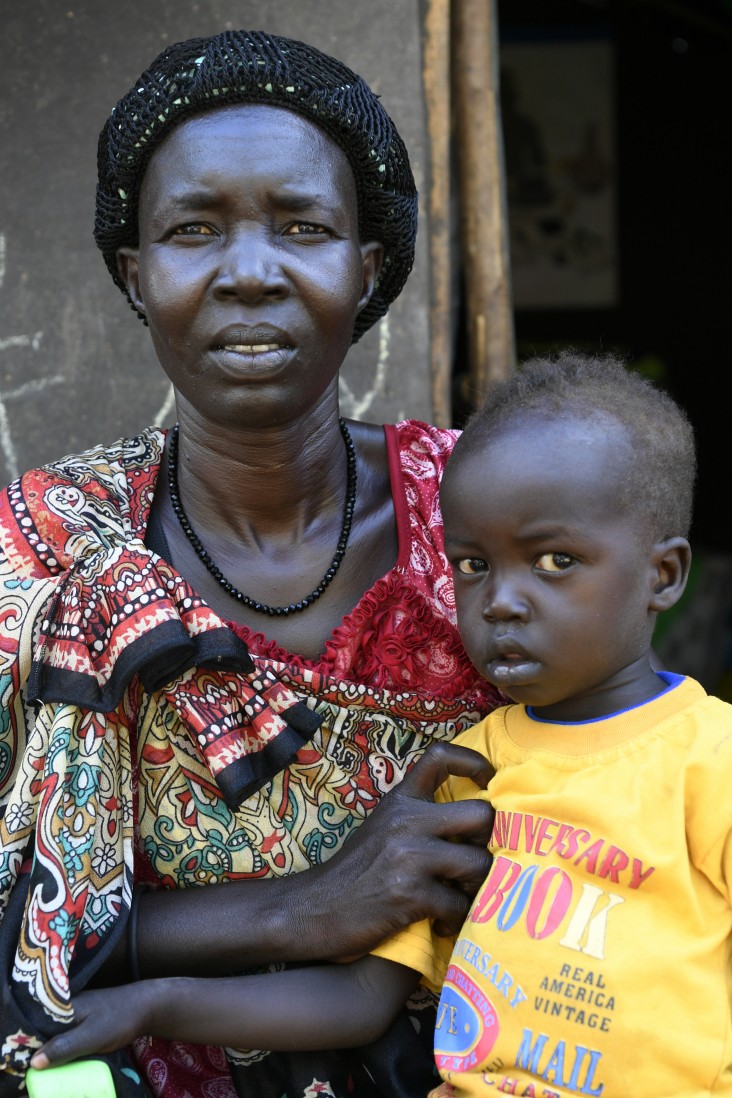Speeches Shim

When Nyantau Machoch and her six children arrived in Ethiopia’s Jewi refugee camp, they were relieved and grateful to receive nutrient-packed biscuits, the first food they had eaten in days. The family had traveled through the bush on foot from their home in war-torn South Sudan, as gunshots rang out around them. They survived on leaves and wild fruits, which filled their stomachs but made them sick.
Machoch’s story is heartbreaking, but not uncommon. “I was part of whole villages escaping the war,” Machoch says. “Whole neighborhoods were traveling to Ethiopia to save their lives. I have seen people dying at gunpoint on the way.”
The South Sudanese people are caught in a multi-year civil conflict, and the fighting has forced families to abandon their homes, farms and livestock to search for safety. As of May 2018, more than 443,000 South Sudanese refugees were sheltering in Ethiopia, the equivalent of the entire population of Miami, Fla.
In the sanctuary of the refugee camps, Machoch receives food assistance from USAID and the U.N. World Food Program (WFP). Her family’s food ration includes wheat, maize, lentils, peas, vegetable oil and specialized nutritious supplements for children under 2 years, like her youngest daughter.
“My favorite is the maize, which I use to cook wal wal [small balls of dough]. I also make bread from the wheat, which my kids love,” she says.
The South Sudan crisis has created one of the world’s largest — and fastest growing — refugee crises. South Sudanese make up nearly half of the 920,000 refugees sheltering in Ethiopia. In the first five months of 2018, approximately 30,000 South Sudanese crossed the border into Ethiopia. More could join them if conflict continues, pushing vulnerable South Sudanese to the brink of famine.
The massive influx of refugees will mean ration cuts and Machoch is worried that will mean less food for her family. From now until August, refugees will receive only one and a half meals per day. Machoch is also concerned about nursing mothers in the camps. “We are at a critical time,” she says.
USAID provides emergency food and nutrition assistance to all refugees in Ethiopia, many of whom come from Somalia and Eritrea in addition to South Sudan. Since October 2016, USAID has provided WFP with approximately 96,000 metric tons of food — grown in the United States or the East Africa region — valued at more than $70 million to support the basic food requirements of refugees.
Machoch and her family have found refuge in Ethiopia, but she hopes to return home to South Sudan one day, when there is peace. For now, she says it is enough that there is peace in the camps and that her children can attend school without the sound of gunshots overhead.
This story originally appeared on Medium.
LINKS
Follow @USAIDFFP, @USAIDSouthSudan, on Facebook, on Flickr

Comment
Make a general inquiry or suggest an improvement.